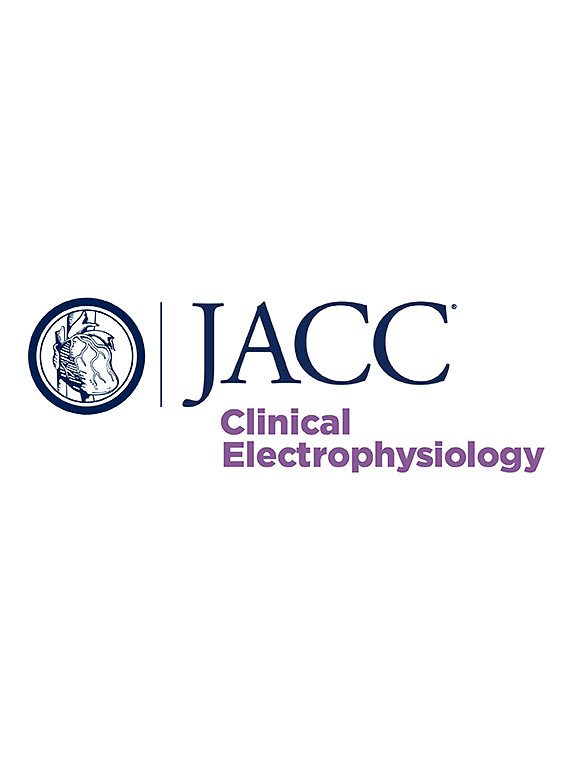Effect of Ablation Energy Source on Outcomes of Slow Pathway Modification for AVNRT in Children
IF 8
1区 医学
Q1 CARDIAC & CARDIOVASCULAR SYSTEMS
引用次数: 0
Abstract
Background
Selection of radiofrequency ablation (RF) or cryoablation (Cryo) for atrioventricular nodal re-entrant tachycardia (AVNRT) in children remains controversial due to a lack of contemporary comparison studies in this population.
Objectives
This study sought to compare outcomes of RF and Cryo for AVNRT in the pediatric population.
Methods
AVNRT ablation outcomes were retrospectively analyzed utilizing the National Cardiovascular Data Registry IMPACT (Improving Pediatric and Adult Congenital Treatment) Registry from April 2016 to March 2019. Data from subjects 1 to 21 years of age undergoing elective first-time slow pathway (SP) modification for AVNRT were included. Exclusion criteria included <1 year of age, congenital heart disease, and >1 ablation target. Cases were analyzed by ablation energy: 1) RF only; 2) Cryo only; 3) radiofrequency ablation switching to cryoablation (RF→Cryo); and 4) cryoablation switching to radiofrequency ablation (Cryo→RF). The primary outcome was acute ablation failure. Secondary outcomes included in-hospital adverse events.
Results
Among 2,448 patients (mean age 13.6 ± 3.4 years, 60% female), RF only was employed in 43% (n = 1,046), Cryo only in 49% (n = 1,201), RF→Cryo in 6% (n = 135), and Cryo→RF in 66 (3%). Acute ablation failure occurred in 1.3% (n = 33), with no difference by energy source (1% in RF only, 1.5% in Cryo only, 1.5% in RF→Cryo, 3% in Cryo→RF; P = 0.5). Atrioventricular (AV) block requiring permanent pacemaker did not occur in any group; transient AV block occurred in 0.4% of the cohort, with no difference by group.
Conclusions
In this largest pediatric study of AVNRT ablation, RF and Cryo demonstrated comparable high acute success and rare documentation of AV block that did not result in temporary or permanent pacing. Longitudinal data are important for further comparison of these modalities with regard to recurrence risk and late complications.
消融能量源对儿童房室传导阻滞(AVNRT)慢通路改造结果的影响
背景:选择射频消融(RF)或低温消融(Cryo)治疗儿童房室结再发性心动过速(AVNRT)仍存在争议,因为缺乏针对这一人群的当代比较研究:本研究旨在比较射频和低温治疗儿童房室结再动性心动过速的效果:2016年4月至2019年3月期间,利用国家心血管数据登记处IMPACT(改善儿童和成人先天性治疗)登记处对AVNRT消融结果进行了回顾性分析。研究纳入了1至21岁因AVNRT首次接受选择性慢通路(SP)改造的受试者数据。排除标准包括 1 个消融靶点。病例按消融能量进行分析:1)仅射频;2)仅低温;3)射频消融转为低温消融(射频→低温);4)低温消融转为射频消融(低温→射频)。主要结果是急性消融失败。次要结果包括院内不良事件:在 2448 名患者中(平均年龄为 13.6 ± 3.4 岁,60% 为女性),43%(1046 人)仅采用射频消融,49%(1201 人)仅采用低温消融,6%(135 人)采用射频→低温消融,66 人(3%)采用低温→射频消融。急性消融失败发生率为 1.3%(n = 33),不同能量源之间无差异(仅射频为 1%,仅低温为 1.5%,射频→低温为 1.5%,低温→射频为 3%;P = 0.5)。需要永久起搏器的房室传导阻滞在所有组别中均未发生;一过性房室传导阻滞发生率为 0.4%,组别间无差异:结论:在这项规模最大的儿科房室传导阻滞消融术研究中,射频和低温消融术的急性成功率相当高,而且很少出现房室传导阻滞,不会导致临时或永久起搏。纵向数据对于进一步比较这些方式的复发风险和后期并发症非常重要。
本文章由计算机程序翻译,如有差异,请以英文原文为准。
求助全文
约1分钟内获得全文
求助全文
来源期刊

JACC. Clinical electrophysiology
CARDIAC & CARDIOVASCULAR SYSTEMS-
CiteScore
10.30
自引率
5.70%
发文量
250
期刊介绍:
JACC: Clinical Electrophysiology is one of a family of specialist journals launched by the renowned Journal of the American College of Cardiology (JACC). It encompasses all aspects of the epidemiology, pathogenesis, diagnosis and treatment of cardiac arrhythmias. Submissions of original research and state-of-the-art reviews from cardiology, cardiovascular surgery, neurology, outcomes research, and related fields are encouraged. Experimental and preclinical work that directly relates to diagnostic or therapeutic interventions are also encouraged. In general, case reports will not be considered for publication.
 求助内容:
求助内容: 应助结果提醒方式:
应助结果提醒方式:


